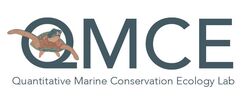Investigators: Susan Piacenza, Dan Pondella (Occidental College), Jeremy Claisse (Cal Poly), Chelsea Williams (Occidental College), Jon Williams (Occidental College), Amanda Zellmer (Occidental College), Jennifer Caselle (UCSB)
Following my Ph.D., I worked as a post-doctoral researcher for the Vantuna Research Group at Occidental College. During this project, we collaborated with biologists at California Polytechnic University – Pomona, and University of California – Santa Barbara (funded by the NOAA Saltonstall-Kennedy grant). Understanding the relative influence of habitat characteristics and anthropogenic impacts on species biomass underpins ecosystem based management (EBM). One major tenet of EBM is to restore ecological communities. For temperate rocky reefs, it is unclear what oceanographic, habitat, biotic, and anthropogenic factors best explain high biomass communities, and subsequently what characteristics may best support restoration. Thus, we asked what are the characteristics of rocky reefs with high fish biomass? Using a data set that spans the Southern California Bight (SCB), we analyzed rocky reef fish communities, visually sampled via SCUBA, using generalized linear modelling within the information-theoretic approach. We assembled a suite of spatially resolved explanatory variables (N=14), and ran models to relate total fish biomass and the biomass of the nine most abundant species to the environmental correlates. Total fish biomass was positively correlated with reef slope and Chlorophyll A, but negatively related to sea surface temperature and distance to shelf break. Increasing fish biomass with reef slope, and proximity of the reefs to the shelf break suggest that habitat heterogeneity is important in driving high fish biomass on temperate rocky reefs in southern California. For the predictors that occurred most frequently in the top ranked models, the directionality of the relationship was generally conserved across species, suggesting unity in optimal environmental conditions across the most abundant species. Not all rocky reefs in the SCB equally support high densities of fish biomass, and our results suggest that an optimal combination of environmental and habitat conditions may support increased reef fish biomass. This information can be integrated into the design of manmade reefs and the interpretation of spatial management action effectiveness, including marine protected areas. In the future, I would like to like to apply a similar approach to natural and artificial reefs in the Gulf of Mexico to enhance artificial reef design and reef restorations in the Gulf of Mexico.
Following my Ph.D., I worked as a post-doctoral researcher for the Vantuna Research Group at Occidental College. During this project, we collaborated with biologists at California Polytechnic University – Pomona, and University of California – Santa Barbara (funded by the NOAA Saltonstall-Kennedy grant). Understanding the relative influence of habitat characteristics and anthropogenic impacts on species biomass underpins ecosystem based management (EBM). One major tenet of EBM is to restore ecological communities. For temperate rocky reefs, it is unclear what oceanographic, habitat, biotic, and anthropogenic factors best explain high biomass communities, and subsequently what characteristics may best support restoration. Thus, we asked what are the characteristics of rocky reefs with high fish biomass? Using a data set that spans the Southern California Bight (SCB), we analyzed rocky reef fish communities, visually sampled via SCUBA, using generalized linear modelling within the information-theoretic approach. We assembled a suite of spatially resolved explanatory variables (N=14), and ran models to relate total fish biomass and the biomass of the nine most abundant species to the environmental correlates. Total fish biomass was positively correlated with reef slope and Chlorophyll A, but negatively related to sea surface temperature and distance to shelf break. Increasing fish biomass with reef slope, and proximity of the reefs to the shelf break suggest that habitat heterogeneity is important in driving high fish biomass on temperate rocky reefs in southern California. For the predictors that occurred most frequently in the top ranked models, the directionality of the relationship was generally conserved across species, suggesting unity in optimal environmental conditions across the most abundant species. Not all rocky reefs in the SCB equally support high densities of fish biomass, and our results suggest that an optimal combination of environmental and habitat conditions may support increased reef fish biomass. This information can be integrated into the design of manmade reefs and the interpretation of spatial management action effectiveness, including marine protected areas. In the future, I would like to like to apply a similar approach to natural and artificial reefs in the Gulf of Mexico to enhance artificial reef design and reef restorations in the Gulf of Mexico.
